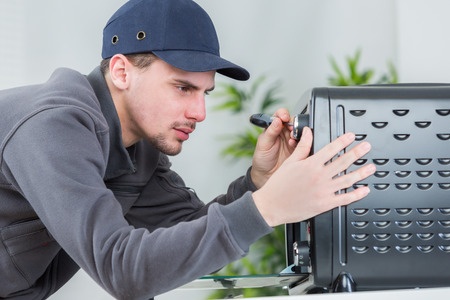
Here are details of some of the parts that can make the cooking appliance too hot:
Temperature Sensor
On most modern ranges, the temperature sensor is responsible for monitoring the temperature of the oven. When the temperature inside the machine becomes too hot, it signals the electronic control to turn off the element. If there is a problem with the temperature sensor, it will not be able to send any signals to the electronic controls. This may be the reason why the house appliance is producing excessive or no heat. The temperature sensor of the machine is usually located near the machine’s broil element. Most modern cooking appliances will display a fault code when there is a problem with the temperature sensor. If you believe that the temperature sensor is malfunctioning, you can check the resistance of the sensor using a multi-meter. However, you must know the correct resistance of the sensor at room temperature to make this check. Before you perform this test, make sure you remove the power supply to the appliance.
Oven Control Thermostat

The adjustment screw is usually located behind the controls. However, this screw is sealed to prevent unnecessary recalibration. Before you recalibrate the temperature of the oven, you must cut the power supply to the machine. If the broil or bake element is not receiving any power supply, you must check the appropriate contacts for continuity using a multi-meter.
We Provide In Home Appliance Service In These Popular Cities:
Jacksonville FL, Orlando, Miami, Henderson, Charlotte, Indianapolis, San Jose, Richmond, Jackson, Chicago, Portland, Aurora, Olympia, Houston, Lakewood, Providence, Eugene, Manchester, Allentown, Salt Lake City, Cleveland, Everett, Fort Worth, San Francisco, Silver Spring, Detroit, Seattle, Pittsburgh, Philadelphia, Phoenix, Columbus, Oklahoma City, Dallas, Los Angeles, Atlanta, Tacoma, Baltimore, Boston, Provo, Sacramento, Louisville, Nashville, Baton Rouge, St. Louis, Raleigh, Tucson, Portland, Austin, Colorado Springs, Kansas City, Albuquerque, Virginia Beach, New York City, Middletown, Milwaukee, Las Vegas, Billings, Tampa, New Haven, Tallahassee, Denver, San Diego, Charleston SC, Little Rock, San Antonio, Birmingham, Reno City, Newark, Columbia, Omaha, Bowie, Minneapolis
The post How To Fix An Oven That’s Too Hot appeared first on OnSite Appliance
It explains how issues with the temperature sensor and thermostat can cause excessive heat. Using a multi-meter to check resistance and continuity is helpful for troubleshooting. Understanding these components is crucial in appliance repair to avoid further complications.
ReplyDelete